This is the sourdough version of the Multipurpose Soft Bread Rolls (Tangzhong) that I posted earlier. Leverage this bread recipe to make stuffed breads like Anpan and Char Siu Bao or simply, hamburger buns!



Sourdough options: discard vs levain vs spiked dough
There are three ways you can incorporate sourdough: sourdough discard, levain, or a combination of sourdough and commercial yeast aka spiked dough. This recipe was formulated using sourdough discard– the trickiest of the three to use for leavening since it is older and more dormant. I have since made this recipe using all three methods and have outline some notes below. If this is your first time leavening with discard, I would recommend trying the spiked dough version, since it has a high chance of success.
Sourdough discard
As mentioned, this is the trickiest of the three to use since it is the least active and has the most developed flavor aka tang.
- Activity: we are using sourdough discard for leavening, so unlike other discard recipes, like crackers or pancakes which doesn’t require any leavening abilities, this one does, so we need to make sure the discard is still pretty active. Make sure you are using discard from an active starter and the discard is not too old. If you are just building your starter, for example, your discard will not work because your starter is not active!
- Age: In terms of age, if your discard is from an active starter, it should be okay to use if it has been in the fridge for about up to a week. A week and a half might be a stretch and you may want to look into the spiked dough method. I usually use my discard after I have collected enough ~5days.
- Tang: The amount of tang you will have depends on the age of your discard. If you want the least amount of tang, use discard that is no more than 3 days old. If you do not want any tang, try the active starter/levain option.
Spiked dough aka sourdough + yeast
Spiking the dough simply just mean adding some commercial yeast to give your sourdough a boost. You can use it in combination with either sourdough discard or sourdough to speed up the rise time. I usually add a small quantity of commercial yeast, about 1/4 tsp for ~100g of flour and it cuts the rise time of dough made with sourdough discard by about an 1-1.5hrs. Obviously, the more you add the more leavening you get from the yeast and the quicker the rise time. Please note that the commercial yeast does impart a flavor to the dough. In small quantities and mixed with sourdough it can be very pleasant– most french baguettes, for example, are made with a combination of long ferment commercial yeast (known as poolish) and sourdough– but in larger quantities you will get that distinct yeasty smell and flavor that I personally don’t like (think Subways bread).
Active starter / levain
You can always use active starter or levain in place of sourdough discard in sourdough discard leavened recipes. It will create a sweeter loaf, so you don’t have to worry about the unpleasant tang from the discard, and leavens dough just a tad bit quicker. I usually never have enough active starter to bake with (I only have 35g of starter sitting on the kitchen counter at any given time, see the post on my sourdough starter maintenance & baking schedule for more info) so I would make a levain build. My go to build ratio is 1:6:6. That ensures that my leavain is super active 10ish hours later for use.
Tips & Recommendations for a successful bake:
- If you are using sourdough discard, make sure you are using discard from an active starter and the discard is not too old. If you are just building your starter, for example, your discard will not work because your starter is not active! In terms of age, if your discard is from an active starter, it should be okay to use if it has been in the fridge for about up to a week and a half. If you are worried that your discard may not be active enough to work, try spiking the dough with 1/4tsp of commercial yeast to give it a boost. You’ll still get that sourdough flavor and will be able to reduce your waste.
- This is sourdough so time and patience are key! Make sure the dough has properly risen before shaping & baking. Using sourdough discard, the first rise for me takes about 3.5 hours and the second about 2 hours. With active sourdough starter or levain it is a little shorter. If you try to use the dough before it is ready, it will come our hard and dense!
- Make sure the Tangzhong has cooled to room temperature before using. If you are using Tangzhong from the fridge, make sure it comes back to room temperature before using.
- This is a plain bun– only with a touch of sweetness, if you like sweeter bread, add an extra 10g of sugar. If you want milk bread, up the sweetness and add about 2 tsp of milk powder!
- The mixed dough is wet and sticky– try working with it and kneading it until a smooth dough forms. If it is too sticky to handle, add you can add some flour, 10g at a time. Avoiding adding too much additional flour.
- Do not skip the egg wash. It makes the buns nice and glossy!
Sourdough Basic Soft Asian Bread Rolls (Tangzhong)
Ingredients
Tangzong
- 24 g all purpose flour
- 120 g milk or water
Main dough
- all tangzong
- 30 g sugar +10g for a sweeter bread
- 130 g active sourdough discard or starter
- 1 egg
- 225 g all purpose flour
- 1/2 tsp salt
- 30 g unsalted butter room temperature
- sesame seeds to top
Egg wash
- 25 g egg about half an egg
- 1.5 tsp water
Instructions
- Make the Tangzhong: combine flour and milk in a pan and heat it on medium heat, constantly mixing until a paste forms. Transfer to a bowl and let cool completely.
- Mix sourdough discard and egg into the Tanzhong. Combine flour, sugar and salt and add to the wet mixture. A sticky dough should form. Keep kneading until the dough cleans from the side bowl. Add butter and squeeze it into the dough. The dough will come apart but will come back together– continue to knead until a smooth elastic ball forms. ~10 minutes by hand. Lightly oil the dough, cover and let rise ~3-4 hrs or until the dough looks soft and puffy.
- Transfer the dough onto a lightly floured work surface. Divide the dough into 6 even pieces and roll into tight balls. Place it on a lined baking tray, cover with plastic wrap and let rise for about 1.5-2.5 hours. note: At this point you can also cover and transfer the dough to the fridge to bake the next day. Just make sure to let the dough come back to room temperature ~2 hours before baking.
- Preheat oven to 350F. Make the egg wash by beating egg and water together. Brush the top of the buns with the egg wash, sprinkle with with sesame seeds. Bake for about 15 minutes or until the top is golden brown.
- Let cool for about 5 minutes on the baking sheet. Enjoy warm or room temperature. Store in an airtight container or zip top bag for up to 5 days at room temperature, longer in the fridge.
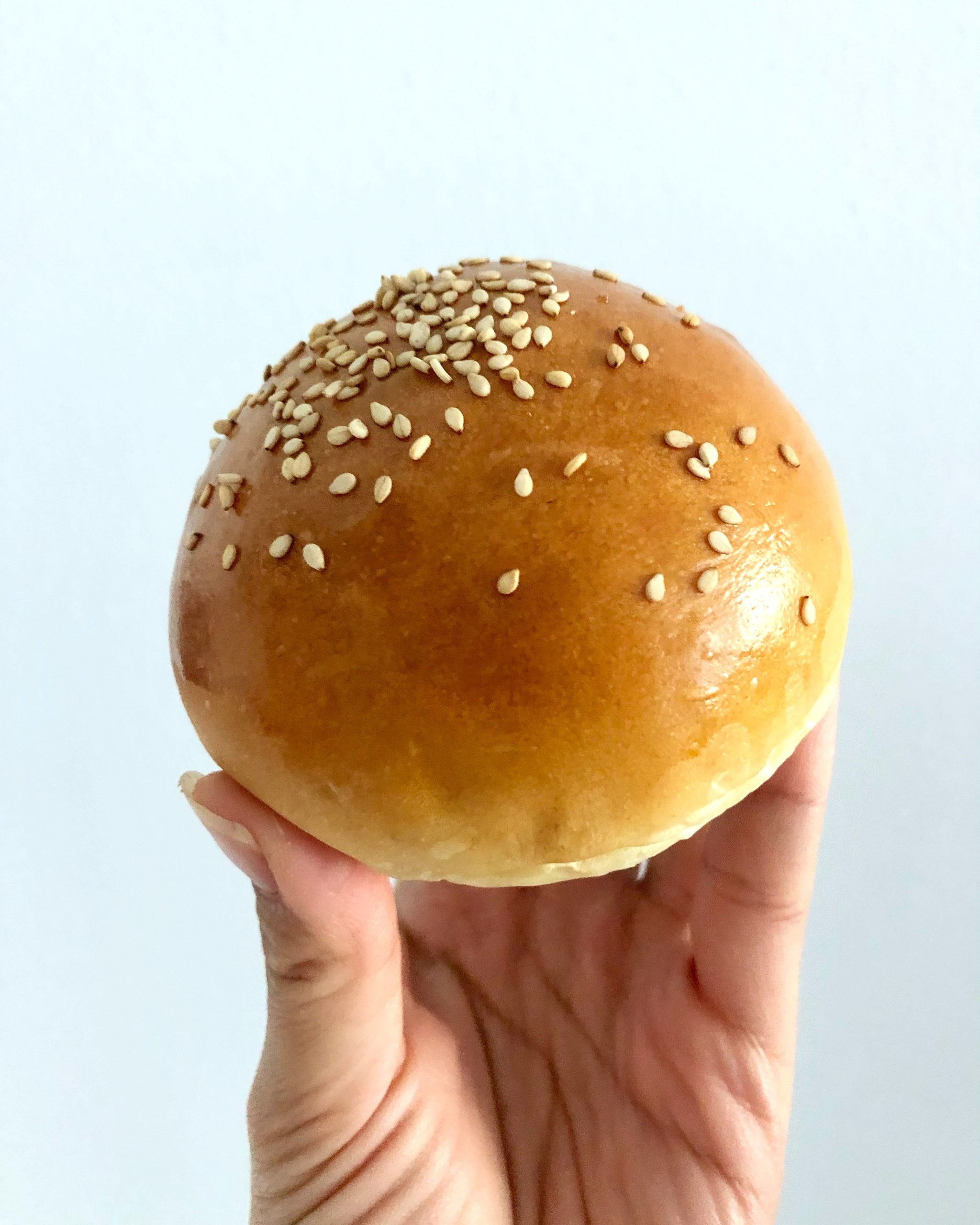






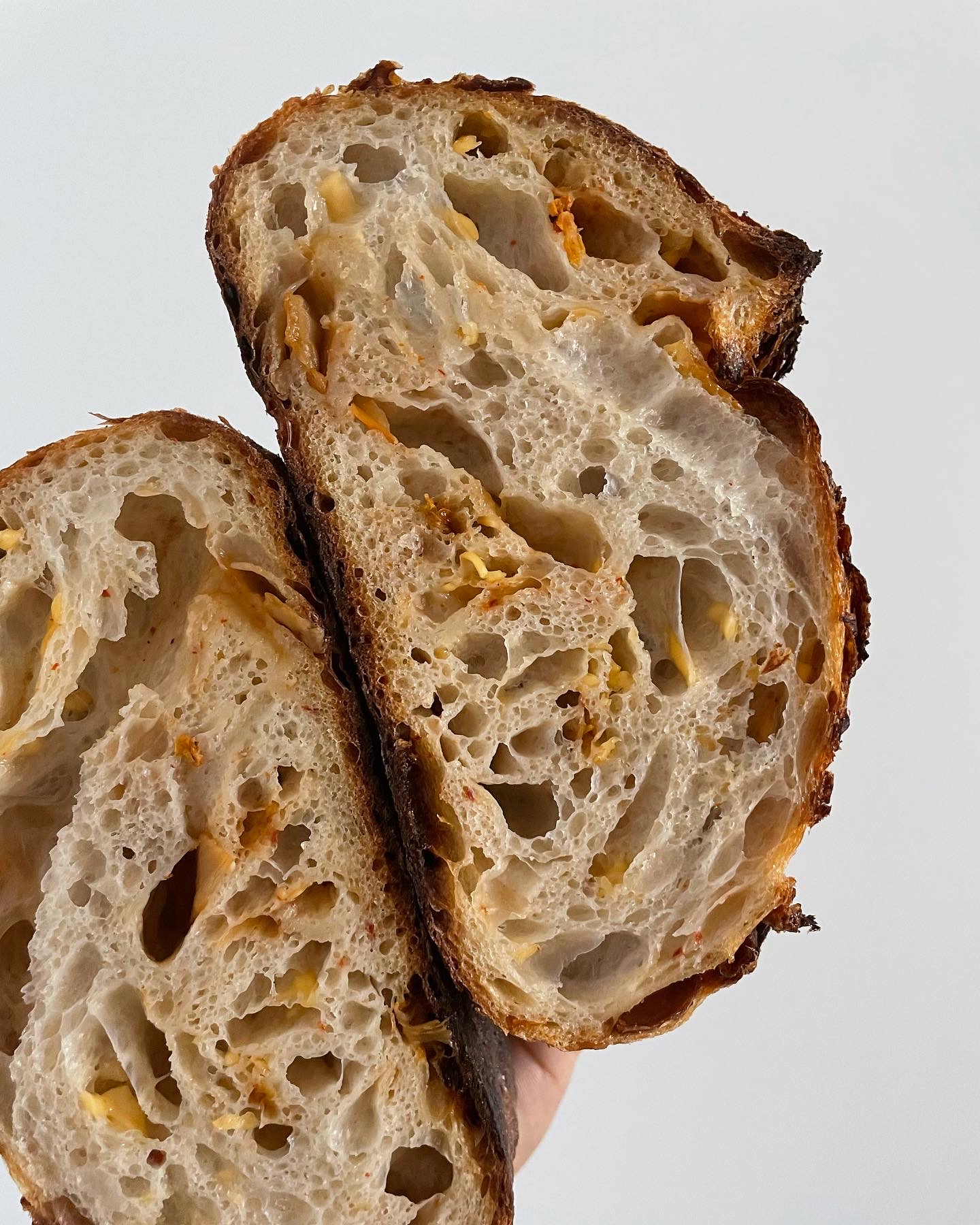

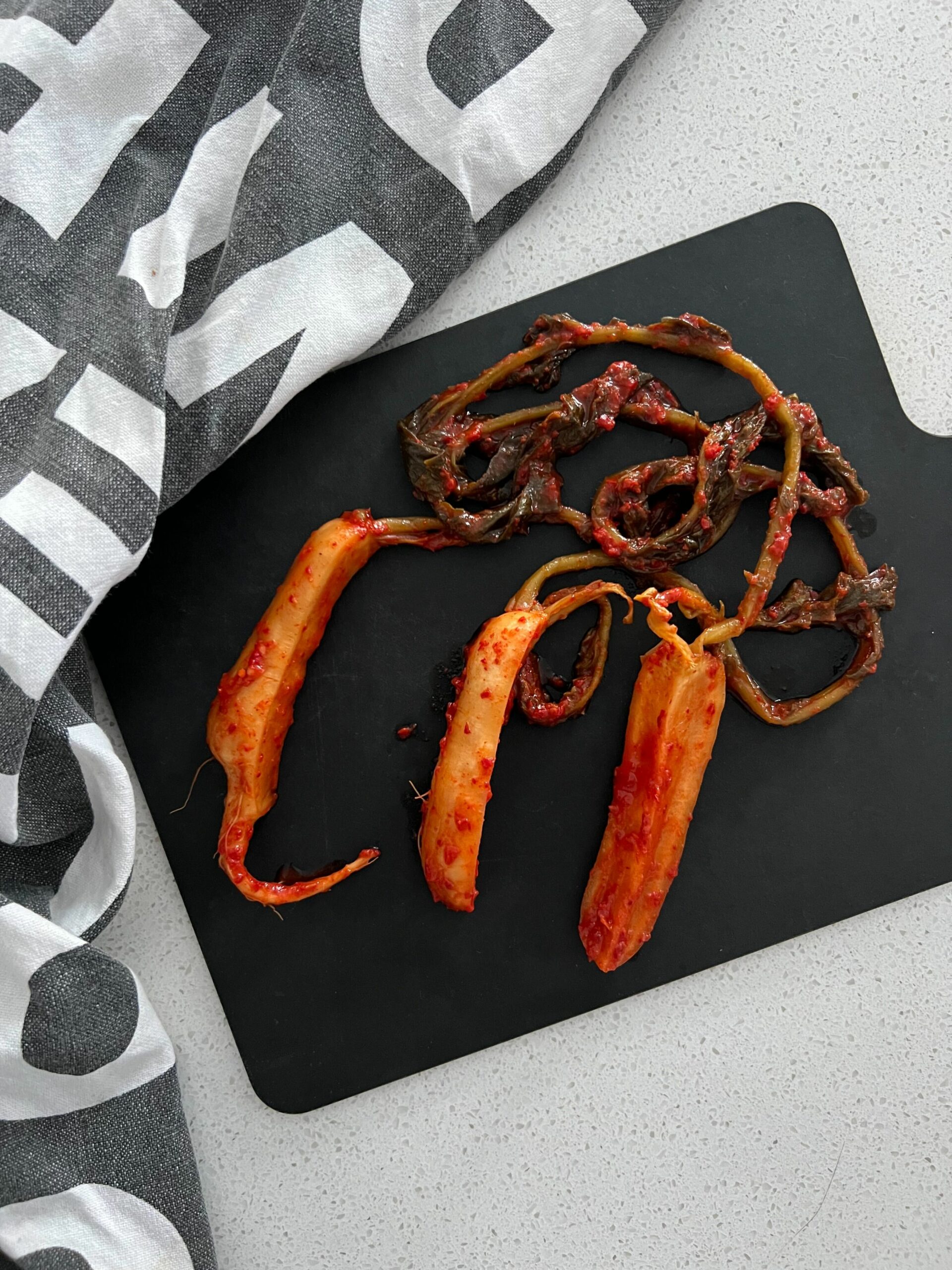
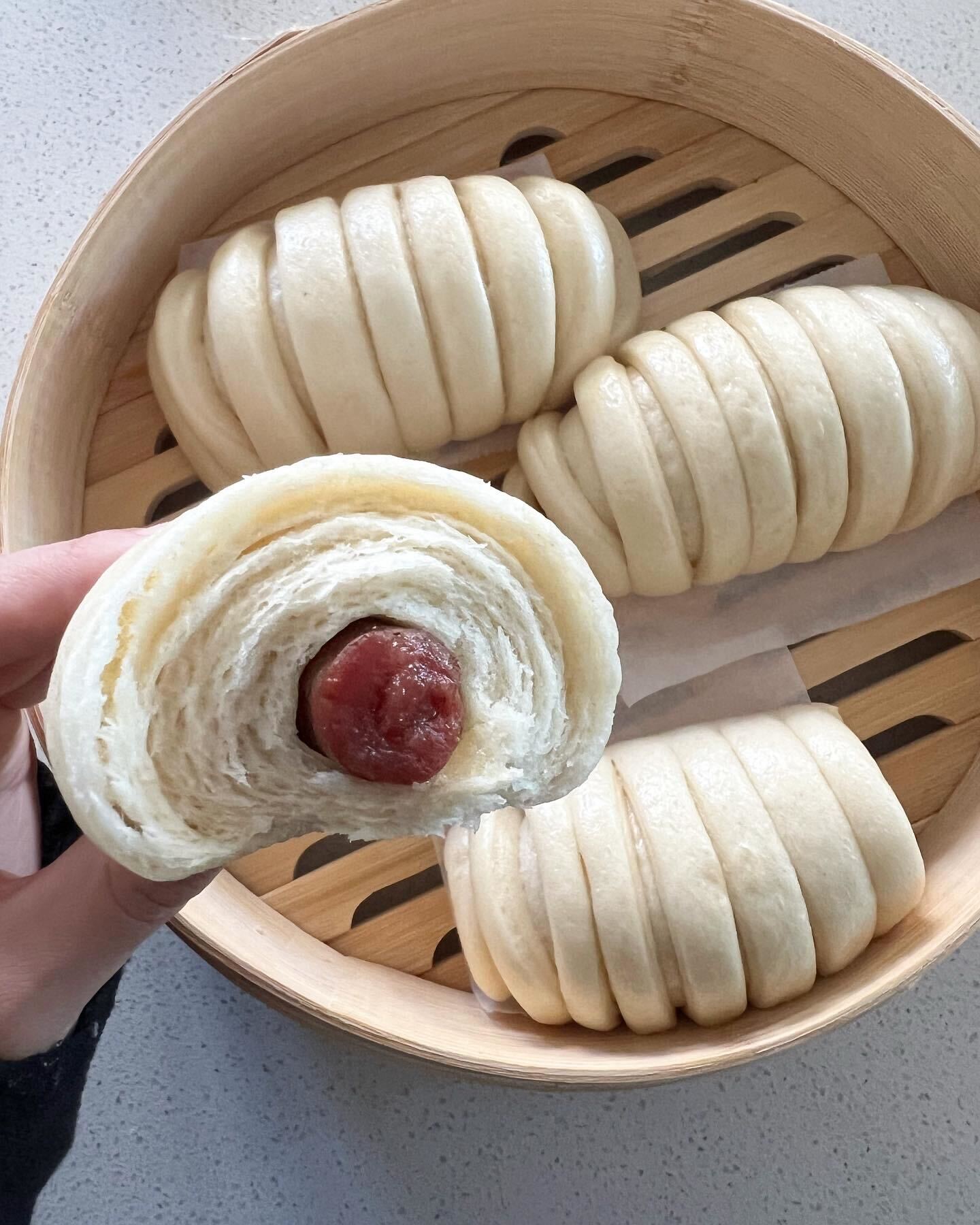
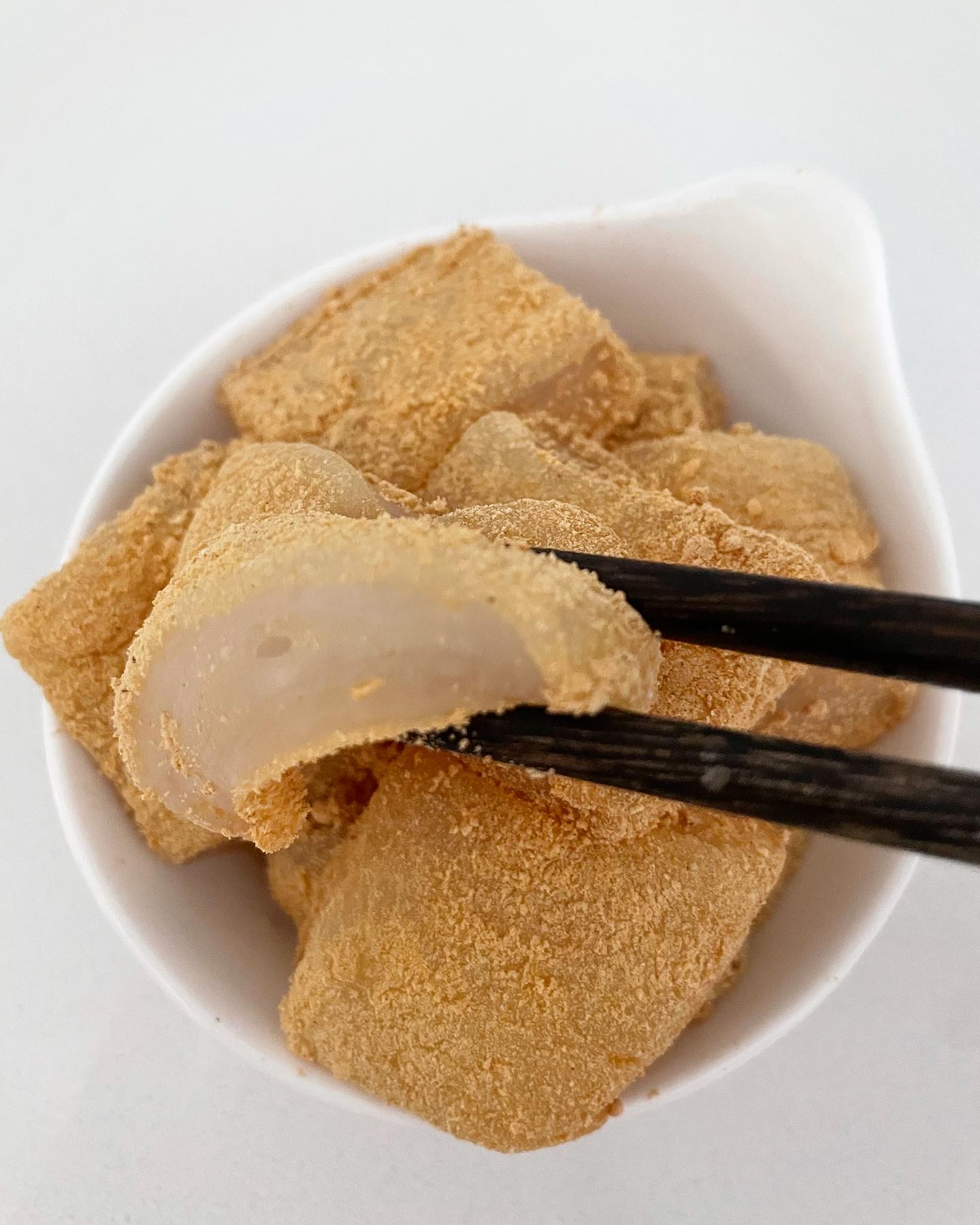

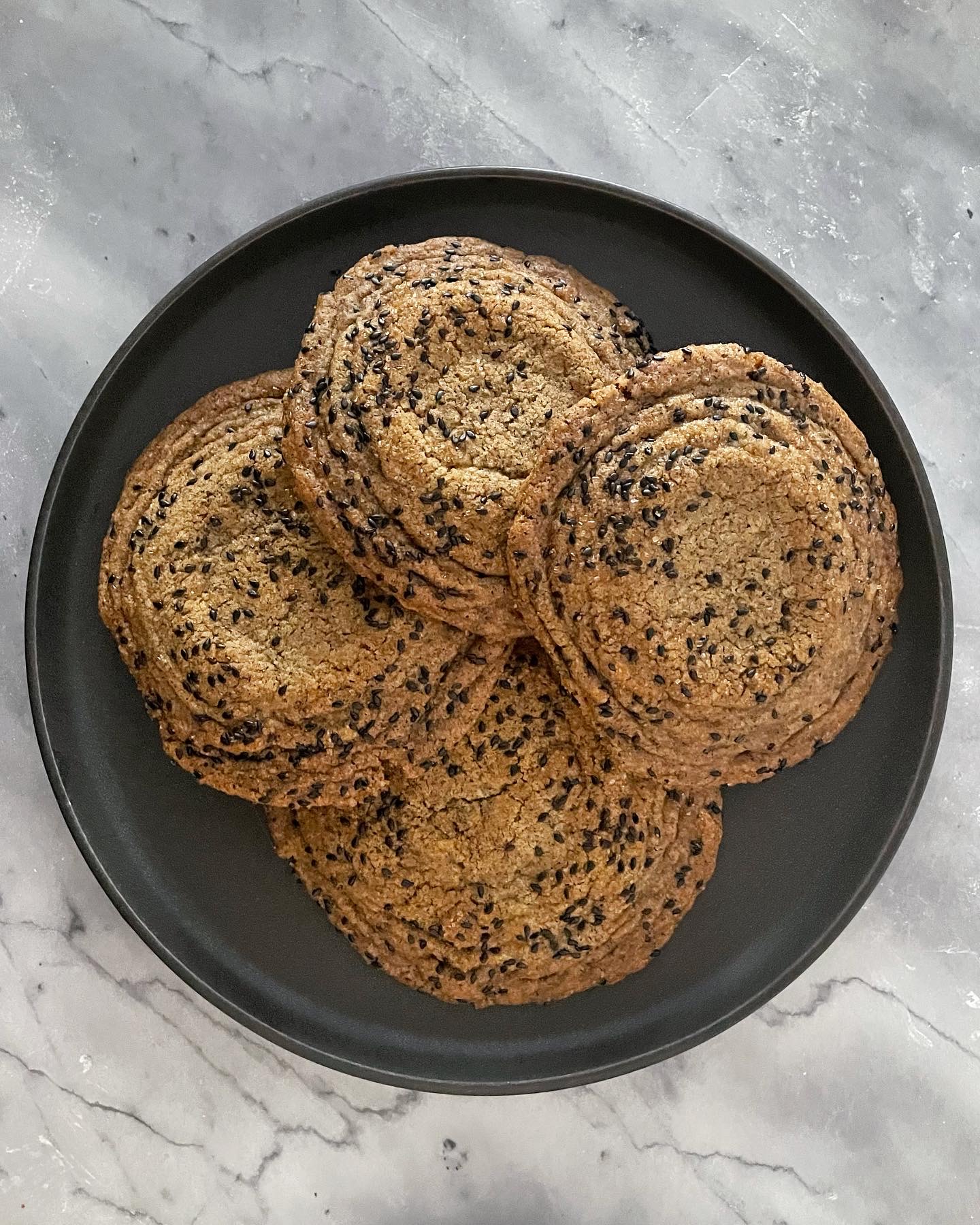
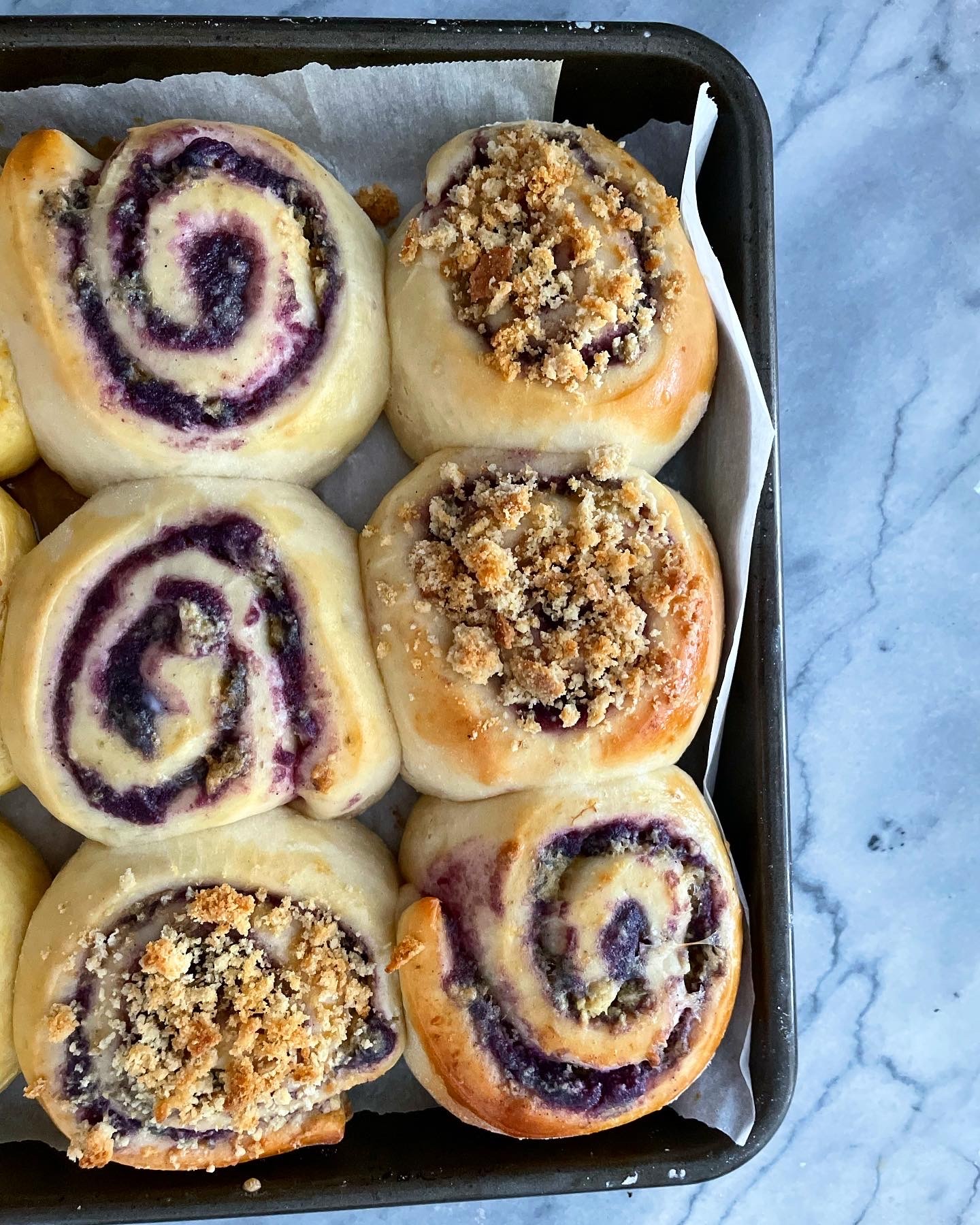
If I were going to stuff these like baos, would I do so before the second rise? Thus, stuff and let them sit again for 1.5-2.5 hours? I’m concerned that’s too long for a stuffed dough to sit?
Hi Ankasan! Great question. You will fill the baos when you shape (before the second rise), like these ube buns: https://www.craving-nomz.com/baked-ube-bun-sourdough-or-yeasted/
Generally food is safe, according to food handler’s guidelines, to be left out for up to 4 hours. After that, it is recommended to dispose. If you are cooling your buns, it is best practice to cool them to 41F within 6 hours. So having your fillings sitting in the buns for 1.5-2.5 hours should be ok! Hope that helps!
Thank you! This is helpful.
And sorry, as I was unclear. I wasn’t asking from a food safety angle. I wondered if the filling might make the dough soggy somehow before baking and/or mess with the rise.
If the filling is thick enough (not too wet) and is at room temperature, it should be fine! If you use filling right out of the fridge, it will drop of the overall dough temperature and would affect rise. If it is too wet, the biggest issue would actually be leaking since steam will build up and the filling might burst out. Dough can surprisingly handle high hydration, as long as it is cooked properly it won’t be soggy!
looks so good i’d like to make a huge batch! do you anticipate any issues with doubling the recipe?
No issues at all! Feel free to double!
At the beginning of the recipe, it says it is for 4 buns, but the directions say to divide the dough into 5 pieces. Just want to know which it is.
Hi Barbara. Thank you for catching the typo! I’ll update the steps to say 4!